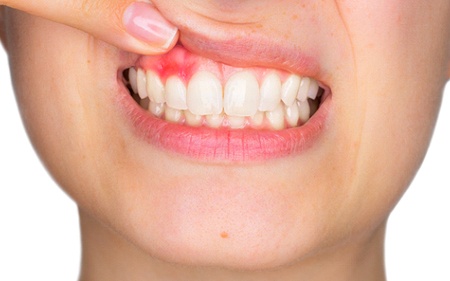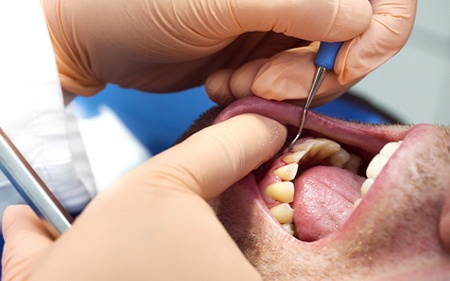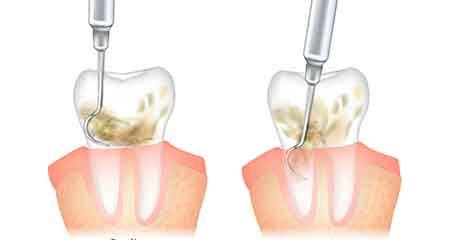Periodontal Therapy – Gainesville, FL
Better Protection for Your Gums

Our doctors have much experience helping patients who are suffering from gum disease in Gainesville. Considered to be one of the most common dental problems seen by dentists throughout the country, millions of Americans do not even realize they have it until they’re seen by a dental professional. Fortunately, there are treatment options available to help curb the negative effects of gum disease and improve the health of these soft tissues – periodontal therapy. To learn more about how our doctors remove plaque and tartar accumulations to help patients see a newer, healthier smile, contact our office for periodontal therapy in Gainesville, FL.
What is Gum Disease?

Gum disease occurs when plaque and tartar begin to accumulate around the base of the teeth and gum line and start to attack the soft tissue. What can start as gingivitis, which can be easily reversed with regular dental checkups and cleanings and practicing good oral habits at home, can quickly escalate into periodontitis. This more advanced version of gum disease can cause deep gum pocket formations that trap food particles and bacteria and eventually lead to additional bone and tooth loss as well as other, more serious health conditions.
Symptoms of Gum Disease

The most common symptoms associated with gum disease include:
- Bleeding when brushing and flossing
- Red, tender gums that are also inflamed
- Gum pockets
- Receding gum line or teeth that appear “longer”
- Bad breath
- Sensitivity to hot or cold foods and beverages
- Bone and tooth loss
- Changes in your bite because of shifting teeth
Should the early stages of gum disease (i.e. gingivitis) turn into advanced periodontitis, you could be faced with serious complications. Once the infection reaches the bloodstream, it can travel throughout the body causing:
- Alzheimer’s Disease
- Heart Disease
- Respiratory Infections
- Uncontrollable Diabetes
- Colorectal Cancer
- Babies who are preterm or who have a low birth weight
Gum Disease Treatment Options

Should we recommend periodontal therapy in Gainesville, you can feel confident knowing that the following treatment methods are some of the most effective at removing plaque and tartar and preventing future reinfection.
Antibiotic Therapy
While not always used in combination with scaling and root planing, our team may decide to incorporate antibiotic therapy into your treatment plan. This can be offered as a pill or as a topical application to your gum pockets. The use of antibiotic therapy allows your gums to be better protected against future infection and is most beneficial when maintaining your periodontal checkups and cleanings every 3 months.
Scaling & Root Planing

Scaling and root planing is a highly effective way of treating gum disease before it progresses and becomes severe. This method consists of a deep, thorough cleaning along the gumline as well as the roots of the teeth. By catching signs of gum disease early on and undergoing scaling and root planing, you can avoid numerous future complications – some of them being irreversible! Continue reading to learn more about scaling and root planing and if it’s right for you.
Do I Need Scaling & Root Planing?

Scaling and root planing is often referred to as a “deep cleaning.” If we pick up on any signs of gum disease, including bleeding, swelling, and inflammation, we will address it as quickly as we can to keep it from progressing and resulting in permanent damage to your smile. This treatment aims to remove bacterial buildup around and beneath the gumline. During the root planing portion of the treatment, the roots are smoothed down to allow your gums to reattach to the teeth and heal.
The Process of Scaling & Root Planing

Scaling and root planing usually takes place over two separate appointments. The first one consists of the “scaling” portion. During this visit, we will scrape away plaque and tartar that have accumulated along and beneath the gumline using dental instruments.
Once the scaling portion is complete, we will move on to the root planing. We will do this by smoothing parts of the teeth that are normally hidden underneath the gums. This allows the gums to adhere to your teeth more easily, making it more challenging for additional bacteria to accumulate again in the future. This will reduce your risk of developing gum disease again later.
Aftercare Tips for Scaling & Root Planing

Some sensitivity of the gum tissue is to be expected after scaling and root planing treatment. You may also have some minor inflammation in the area. This is temporary and should go away on its own after a couple of weeks. Here are some tips to help you recover quickly:
- Brush twice daily with a soft-bristled toothbrush
- Use a saltwater rinse after eating
- Floss thoroughly every day
- Stick to a soft-food diet for 48 hours after your treatment
- Avoid spicy, acidic, and hot foods
- Refrain from intense physical activity immediately after treatment

